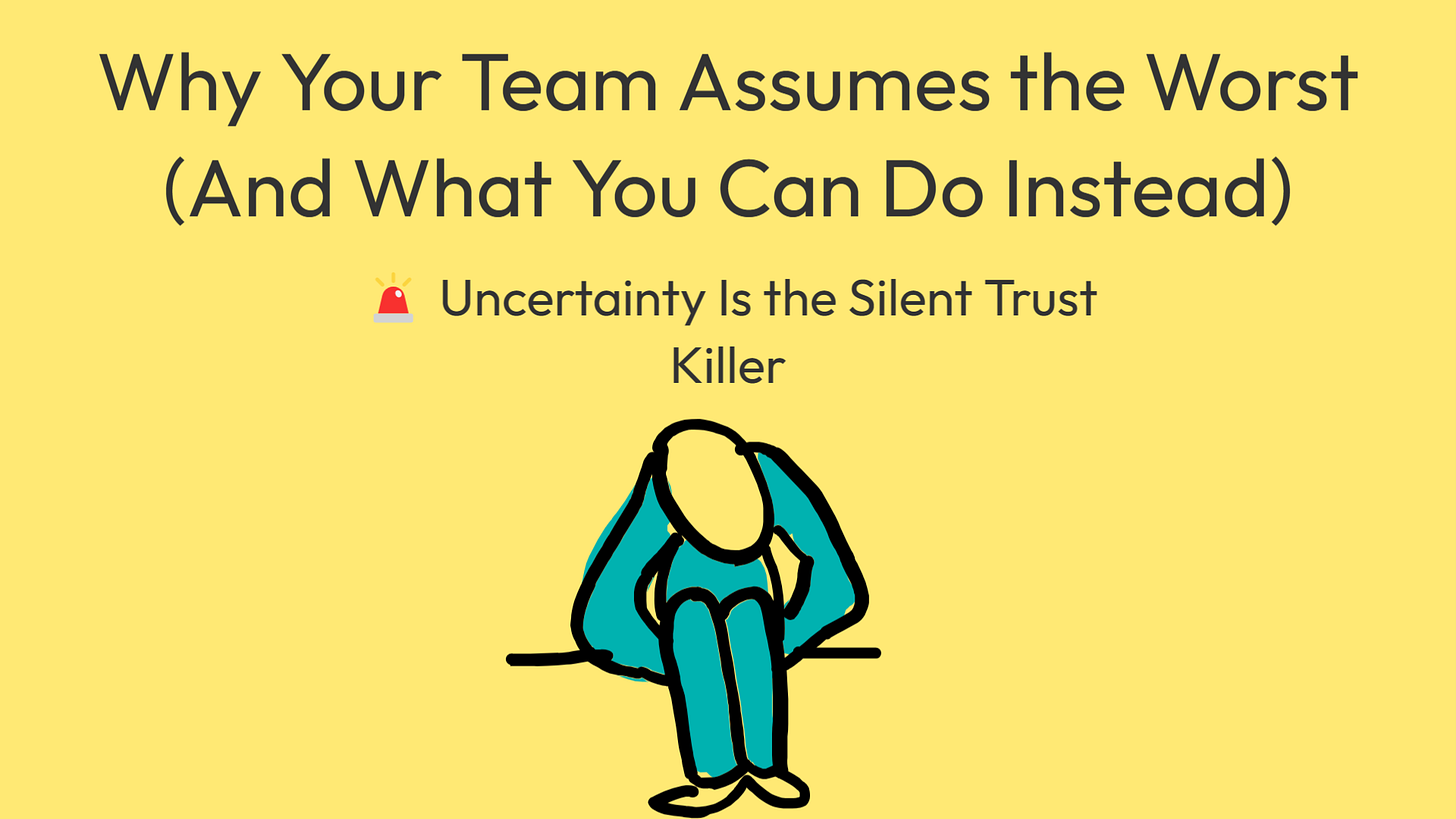Why Your Team Assumes the Worst (And What You Can Do Instead)
🚨 Uncertainty Is the Silent Trust Killer
A few years ago, I had a manager—let’s call him Mark—who suddenly called an all-department meeting. No context. No agenda. Just a Slack message that said:
"Hey team, quick meeting in the conference room at 2 pm. Everyone, please."
Cue the panic.
Slack messages exploded. We stared at each other with nervous half-smiles. My coworker whispered, “He’s going to announce layoffs.”
Another one said, “I bet we’re getting restructured again.”
What actually happened?
Mark walked in, clapped his hands, and said, “Great news! We got funding to expand our team.”
But by that point, most of us had already spiraled through 17 worst-case scenarios. Not because we were dramatic, but because we were human.
🧠 The Brain Hates Uncertainty
One of the most basic psychological needs we have is certainty.
In fact, studies in neuroscience show that our brain sees uncertainty as a threat, triggering the amygdala—the same region activated when we’re in physical danger. When we don’t know what’s happening, the brain fills in the gaps. And it almost always fills them with bad stories.
I’m about to lose my job.
This project must have failed.
They’ve been hiding something.
It’s our brain trying to protect us. But in leadership? This creates chaos.
🚨 Uncertainty Is the Silent Trust Killer
The irony is that leaders often go quiet or vague because they try not to alarm people.
But silence doesn’t create calm—it creates fear.
When we don’t say what’s happening, the story gets written anyway—just without us. And usually, it’s a much darker one.
💡 What Great Leaders Do Instead
Leaders who communicate well during change do three things consistently:
1. They Frame First
Don’t let people write their own story—give them the context before their brain invents one. Even a simple heads-up like:
"No need to worry—this isn’t bad news. I just want to share an exciting update."
…goes a long way.
2. They Normalize Uncertainty Without Amplifying It
If you don’t know something, it’s okay to say, “I don’t have that answer yet, but here’s what I do know.” People can handle ambiguity when it’s paired with honesty.
3. They Repeat the Message of Safety
People want to know: Am I okay? Are we okay?
If your people feel safe—emotionally, mentally, even professionally—they’ll stay focused and engaged. So say it out loud:
“Your job isn’t at risk.”
“We’re figuring this out, and we’ll do it together.”
“We’ve been through change before, and we came out stronger.”
✅ Certainty Builds Trust. Trust Builds Everything Else.
In the end, my manager, Mark, was a great guy. But his delivery created unnecessary fear.
As a leader, your words shape the emotional temperature of the room.
So the next time you’re tempted to wing a message, remember:
If you don’t tell the story, your team will.
And their version probably ends in a layoff.
Bottom Line
Tell the truth. Be clear. And whenever possible, give people the certainty they crave.



